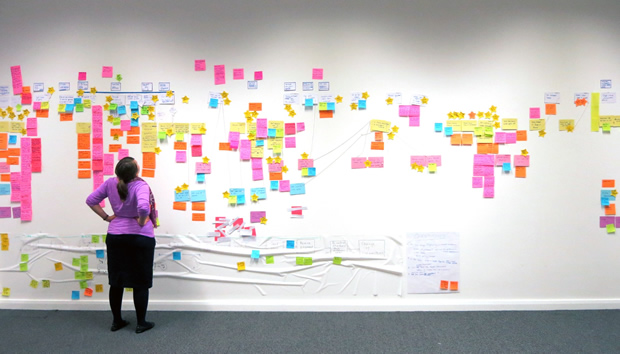You know that moment when you’re first introduced to someone and they ask what you do? In my distant past, I would say I was an English teacher. People would smile and nod. Simple. Now when I say I’m a Product Manager, the reaction is very different. Some people smile blankly and quickly move on. Braver souls stick around to ask me some questions. Here’s what they usually ask ...

So, what exactly is a Product Manager?
I could talk for hours about what my job is and what it means. But as that generally leads to people yawning, I’ve developed a couple of short answers. Sometimes, I echo Silicon Valley guru Marty Cagan who describes the role (in his book ‘Inspired’) as being “to discover a product that is valuable, usable and feasible”. On other occasions, I’ll say I work with a development team to shape and build an optimal software product and service that both meets our customers’ needs and achieves the business goals.
Oh, you must be super techy then?
Um, no. At least I’m not a technical genius, building apps in my spare time. I know enough to understand that java is more than coffee, and that when the developers talk about gherkins, they don’t mean the accompaniment to burgers. I’m constantly learning more about the technology, but the important thing is that I can have a conversation with the developers and testers on my team, and understand their viewpoints. In other words, I’m just technical enough.
How many people do you manage?
I don’t. I manage the product, not the people. Product design and build is a team sport, and the aim is for the team to be self-managing as much as possible. I do work closely with the whole development team - to share the vision for the product and how the team will contribute to its success; to solve problems during the build; and, hopefully, encourage the team to be as passionate about the product as I am.
But what do you actually do every day?
A lot of what I do revolves around communication and collaboration. I’ll spend time with the development team members – the scrummaster, business analyst, UX designers, developers, content designer, testers – speaking about what we’re working on, and giving guidance on what’s most important. I’ll make decisions about whether the approach being proposed is the best for the circumstances. I’ll look at all our future work and prioritise it, so we’re working on the right things at the right times.
I also look at the results and data about what we’ve already built and delivered to our customers - how it’s performing, how customers are using it, how we can make it even better and easier for our customers to use, and how we can make it more effective for the business.
I spend a lot of my time also working with stakeholders who have an interest in the product – either because they talk to the customers directly, or because they work with the product from the business viewpoint. They’re often the best sources of information about what’s working well and what we should change.
How do you make the decisions?
Usually, I’ll make decisions based on a combination of
- data - analytics that show how users interact with the product; statistics about product take up, conversion, etc; customer surveys
- user experience – testing new features with actual users helps us understand the direction to take. This also includes users within the organisation.
- effort/cost – if the ideal solution would take 6 months to deliver, but a 97% solution can be delivered in 2 weeks, it’s better to deliver the 97% now, get it live and start to get the benefits, and then incrementally improve.
Lastly, Product Managers do develop gut instincts. If there isn’t any other source of information, we’ll go with our instinct, put a feature out there, and then if it doesn’t work, we can change it. Test and learn, real-time!
Lastly... do you enjoy it?
It’s definitely a busy job, with more than its fair share of challenges. There are days when you feel like nothing is going right! But on the whole, it’s an exciting and satisfying role, especially when you see customers using the products.
